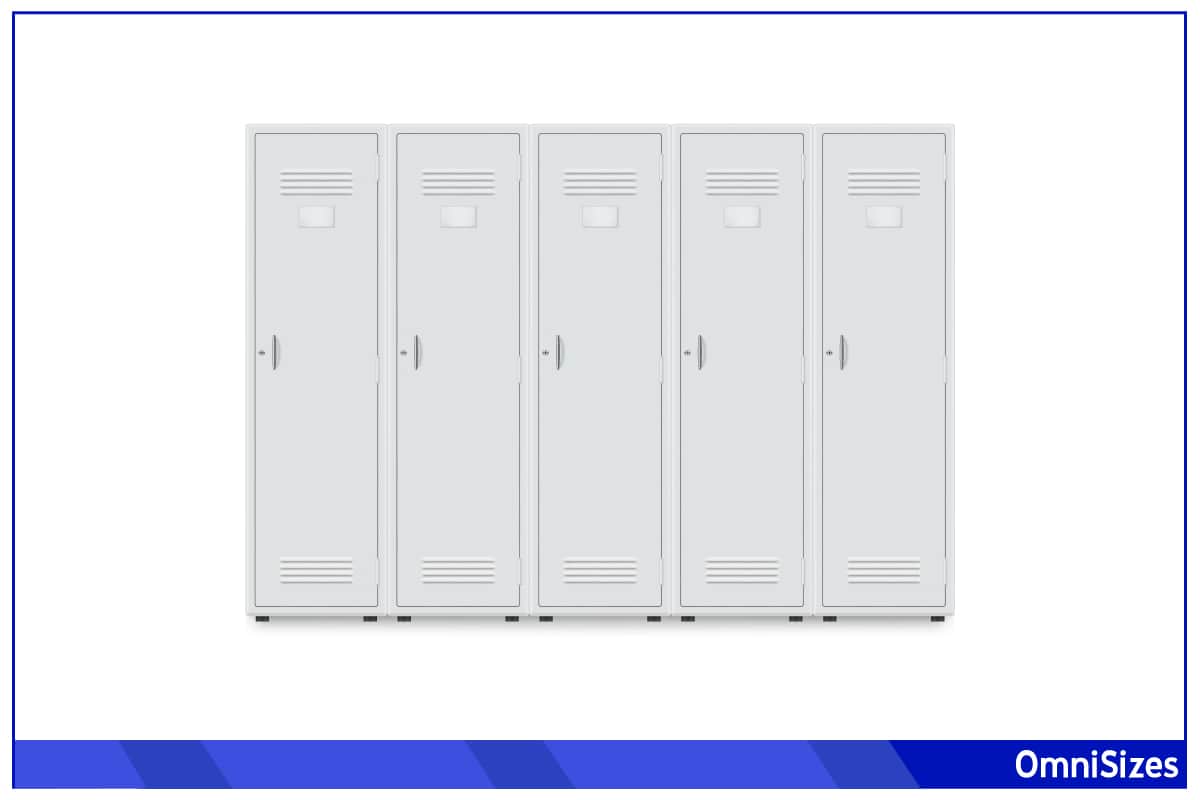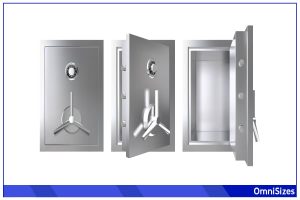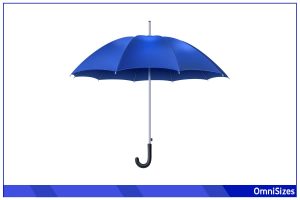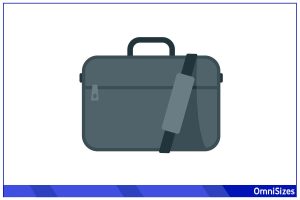Lockers are an essential part of various settings like schools, gyms, and workplaces. The concept of locker sizes is crucial in determining the right fit for different needs. From slim models in tight corridors to spacious units in athletic facilities, locker dimensions vary greatly.
A typical school locker measures around 12W × 15-18D × 60-72H inches (30.48 × 38.1-45.72 × 152.4-182.88 cm) externally, with slightly smaller internal dimensions. Gym lockers are often narrower, while workplace lockers might be wider to accommodate larger items.
This guide will cover the sizes of different locker types, what lockers are usually made of, and what you should consider before installing a set of lockers in any location.
Locker Sizes and Types
Lockers come in various sizes and types to cover different storage needs and space constraints. This section will highlight the dimensions of various locker types.
1. Standard School Lockers
School lockers are typically designed to fit books, clothing, and small personal items. The standard size for these lockers is between 12 × 18 × 72 inches (30.48 × 38.1 × 152.4 cm) and 12 × 18 × 72 inches (30.48 × 45.72 × 182.88 cm). However, sizes can vary, with some schools opting for wider or narrower units to accommodate space availability or specific storage needs.
2. Gym and Fitness Center Lockers
Gym lockers prioritize ease of access and security for personal belongings. They often measure around 12 × 18 × 72 inches (30.48 × 45.72 × 182.88 cm) and provide enough room for gym gear, clothing, and personal items. These lockers may feature enhanced security options like combination locks and are built to withstand high usage.
3. Workplace Lockers
Workplace lockers are designed for professional environments, often wider to accommodate work equipment or personal belongings. Dimensions like 12 × 18 × 72 inches (30.48 × 45.72 × 182.88 cm) offer ample space for items like briefcases, laptops, and coats. These lockers can be customized with features like charging ports for electronic devices.
4. Public Facility Lockers
Public facilities such as pools, libraries, and transportation hubs use lockers to provide temporary storage for visitors. These lockers vary widely in size, from small units for wallets and phones to larger ones for bags and coats. They often incorporate user-friendly features like coin-operated locks and clear signage.
5. Specialized Lockers
Specialized lockers cater to specific needs. For instance, police and military lockers are built to store equipment and uniforms securely. Similarly, industrial lockers might be designed to hold tools and protective gear.
Locker Size Categories
You can also typically find lockers based on general size categories, which are as follows:
1. Small Lockers
Small lockers, typically measuring around 12 × 12 × 36 inches (30.48 × 30.48 × 91.44 cm), are ideal for storing personal items like wallets, phones, and small bags. They are commonly found in places where space is limited, such as offices or retail stores.
2. Medium Lockers
Medium-sized lockers are a versatile option, often measuring about 15 × 15 × 72 inches (38.1 × 38.1 × 182.88 cm). These are standard in schools and gyms, offering enough room for backpacks, clothing, and books.
3. Large Lockers
Large lockers provide ample space for storing bigger items like sports equipment, musical instruments, or work gear. They typically measure around 24 × 24 × 72 inches (60.96 × 60.96 × 182.88 cm). These are ideal for sports facilities, music rooms, and workplaces where larger storage capacity is needed.
4. Custom-Sized Lockers
For unique storage needs or specific space constraints, custom-sized lockers offer a tailored solution. They can be designed in various dimensions to fit unusual spaces or accommodate special items. Custom lockers allow for flexibility in design.
Material and Design Considerations
When choosing lockers, the material and design play a significant role in determining their durability, functionality, and aesthetics.
Metal Lockers
Metal lockers, commonly made from steel, are a popular choice due to their durability and security. They are ideal for schools, gyms, and workplaces. Coated with a powder finish, they resist rust and corrosion, making them a long-lasting option.
Plastic Lockers
Plastic lockers, typically made from high-density polyethylene (HDPE), offer a rustproof and impact-resistant alternative. They are well-suited for environments with high moisture, such as pools and outdoor areas. These lockers are low maintenance, easy to clean, and available in multiple colors.
Wood Lockers
Wood lockers add a touch of elegance and are often used in executive settings, country clubs, and spas. Available in various finishes and stains, they can be customized to match interior decor. While not as durable as metal or plastic, wood lockers offer a warm, inviting appearance but require more maintenance to prevent damage from moisture and wear.
Design Features
- Lock Types: Lockers come with different locking mechanisms, including key locks, combination locks, and digital locks. The choice depends on the level of security required and user convenience.
- Ventilation: Proper ventilation in lockers is crucial, especially for storing damp or soiled items. Designs include louvers, perforated doors, or mesh panels to promote air circulation.
- Color and Finish: The color and finish of lockers can be chosen to complement the environment. Bright colors are popular in schools, while neutral tones suit professional settings.
- Accessibility: Consideration for users with disabilities is essential. Features like lower height and ADA-compliant handles ensure accessibility for all users.
Installation and Space Planning
Proper installation and space planning are essential for maximizing the utility and functionality of lockers.
1. Measuring Your Space
Before purchasing lockers, accurate measurement of the available space is crucial. Start by measuring the floor area where the lockers will be placed. Consider the height, width, and depth of the space, ensuring there is enough room for locker doors to open fully. Also, account for any obstructions like pipes, vents, or electrical outlets that might impact the placement of the lockers.
2. Maximizing Space with Efficient Layouts
Designing an efficient layout for locker installation can significantly impact their usability and the overall space. For tight spaces, consider slim-profile lockers or models with internal shelving to maximize storage without occupying more floor space. In larger areas, grouping lockers in back-to-back rows or creating locker islands can provide ample storage while maintaining easy access and traffic flow. Corner units can utilize often underused spaces.
3. Security and Supervision
In environments where security and supervision are necessary, like schools and public facilities, plan the locker layout to allow clear lines of sight for monitoring. This can help prevent theft and vandalism. Strategically placing lockers near supervisory or high-traffic areas can be an effective deterrent.






